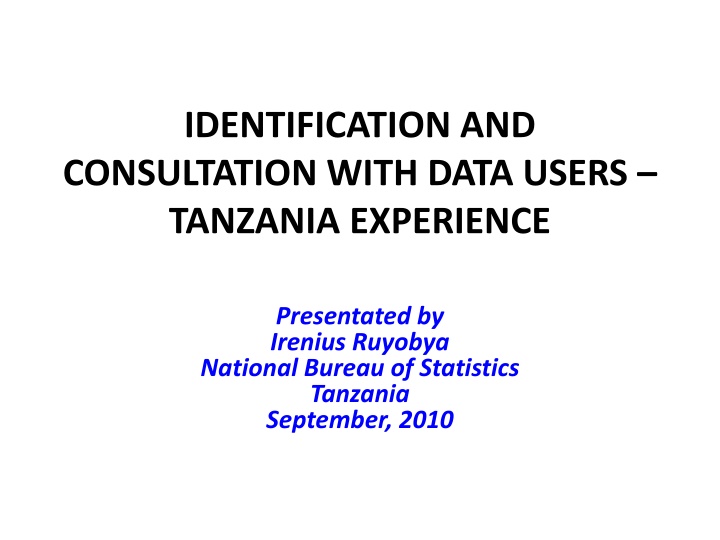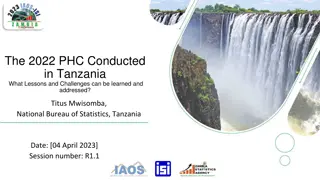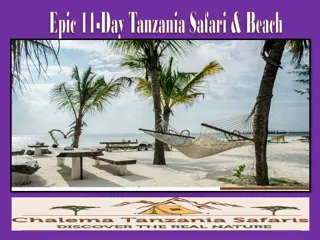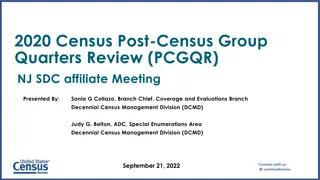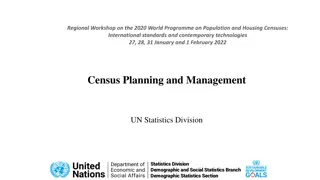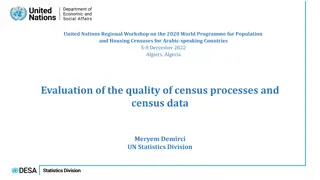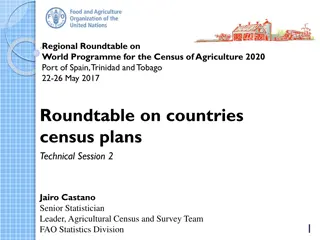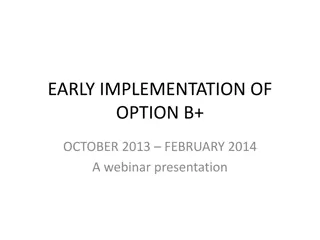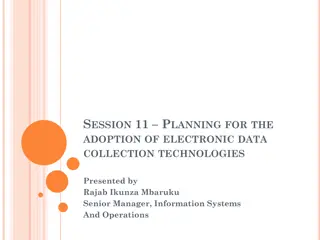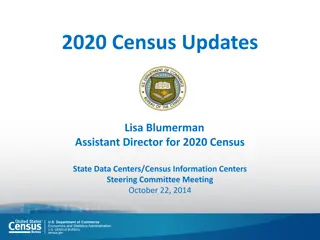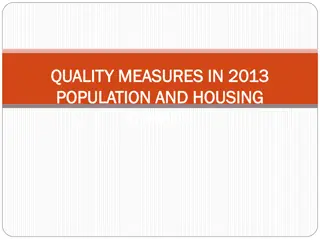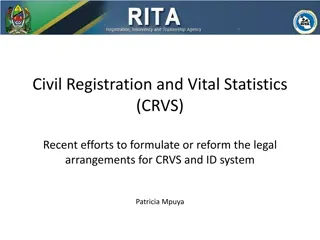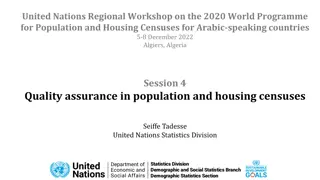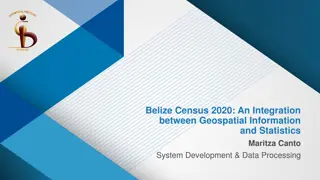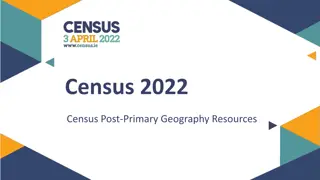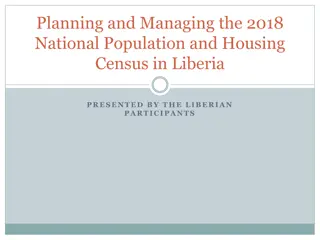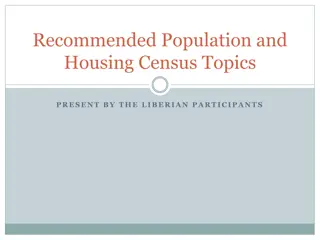Census Operations in Tanzania: Insights from Irenius Ruyobya's Presentation
Delve into the rich history of census-taking in Tanzania dating back to 1910, as highlighted in Irenius Ruyobya's 2010 presentation. Explore the significance of identification and consultation with data users, challenges faced, and the mandate guiding census conduct in Tanzania.
Uploaded on Sep 14, 2024 | 6 Views
Download Presentation

Please find below an Image/Link to download the presentation.
The content on the website is provided AS IS for your information and personal use only. It may not be sold, licensed, or shared on other websites without obtaining consent from the author.If you encounter any issues during the download, it is possible that the publisher has removed the file from their server.
You are allowed to download the files provided on this website for personal or commercial use, subject to the condition that they are used lawfully. All files are the property of their respective owners.
The content on the website is provided AS IS for your information and personal use only. It may not be sold, licensed, or shared on other websites without obtaining consent from the author.
E N D
Presentation Transcript
IDENTIFICATION AND CONSULTATION WITH DATA USERS TANZANIA EXPERIENCE Presentated by Irenius Ruyobya National Bureau of Statistics Tanzania September, 2010
Outline of the Presentation Introduction History of the Census in Tanzania Population of Tanzania Mandate to Conduct the Census Identification and Consultation Experiences from the Last Census Consultative Process Challenges
Introduction A census is an expensive statistical operation, consisting of a complex series of interrelated steps, which a country undertakes; The ultimate goal of the census operation is to provide the government and other stakeholders with essential statistics on the socio-economic conditions of a population; Identification and consultation with data users before the data collection exercise is crucial if that goal is to be achieved.
History of the Census in Tanzania The population censuses in Tanzania dates back to 1910; However, the first scientific census took place in 1958; Four censuses have been conducted since independence in 1961, (1967, 1978, 1988 and 2002); The fifth post independence census is scheduled for 2012.
Population of Tanzania Census counts and Projected Population Population: 1948-2025 70 65.3 Tanzania: Census counts and Projections: 2000-2025 60 Population '000,000' 49.8 45.7 50 Year 1967 1978 1988 2002 2003 2004 2005 2006 2009 2010 2012 2015 2020 2025 Population 40 34.4 12,313,469 17,512,610 23,095,885 34,443,603 34,859,582 35,944,015 37,083,346 38,250,927 41,915,880 43,187,823 45,798,475 49,861,768 57,102,896 65,337,918 30 23.2 17.5 20 12.3 8.7 7.4 10 0 Census Years
Mandate to Conduct the Census Population and Housing Censuses in Tanzania are carried out in accordance with the Statistics Act No. 1, 2002; The Act, inter alia, mandates the NBS to conduct Population and Housing Census within the United Republic of Tanzania. However, census is national issue and therefore involvement of Government leadership and machinery is essential. To ensure, the involvement of national leadership, there is a Central Census Committee chaired by the Prime Minister that provides general guidelines and mobilize the required resources. Similar committees are also available at lower administrative levels i.e the regions and distrits.
Identification and Consultation with Data Users in the last Census Identification of users was based on intended use of population census information. Based on that criterion, users were identified from: Government Ministries and Departments; Local authorities; International Organizations; Research institutions; Business community; Media; Religious organizations; and Community based organizations
Consultative Process The user consultation process in terms of census information was a major factor in the development of topics to be investigated and the dissemination programme after census information have been collected; However, consultative meetings were held at the national level only (shortcoming).
Consultative Process Major objective of those meetings were: To give an overview to users on the planned census; To present a list of topics to be investigated in the census; To inform our major users on improvement and initiatives for the forthcoming census, including key changes to the questionnaires, classification and other processes; and To discuss the dissemination strategies after release of census information.
Consultative Process Five major steps were observed : Step 1: Identification of the topics (draft) to be investigated based on: o History of the country, o Priorities prevailing at that moment, o Recommendations from international bodies o Costs; and o relevance of the topics to be investigated. Step 2: Topics sent to potential users for comments; Step 3: Producer Users meetings. Step 4: Draft questionnaire were pretested and piloted. Step 5: Final version of the questionnaire (which included) observations of the pilot test was again presented to major data users for final comments
Challenges A number of challenges were observed in these meetings: Limited knowledge by users on usefulness, advantages, disadvantages and limitations of a census; Some users requested the inclusion of questions that can only be administered in a specialized survey; Other demands were also on issues that were against the Government policy e.g questions on religion and tribes.
Challenges (Contd) Some of these users were of the opinion that cheap alternative method could be used to generate the required information rather than a census that is expensive. Demand that for census data to be useful then results must be produced within a very short time after enumeration, e.g. within two months.
